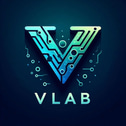Exploring the Diversity of AI Frameworks
A Comprehensive Overview


Introduction
Artificial Intelligence (AI) which has impacted our lives, is a dynamic field being spearheaded by some tech giants as well as other significant companies that provide technology services. This blog highlights the different frameworks
TensorFlow: TensorFlow is one of the most commonly used AI frameworks that was created by Google. It is all encompassing as a platform for building any kind of machine learning models including neural networks hence supports multiple programming languages.
PyTorch: In creating dynamic computational graphs PyTorch is an open-source deep learning framework primarily used by developers and researchers.
Keras: Keras, a Python neural networks API at high-level, allows building more complex models with ease by acting like a wrapper around other low-level frameworks such as TensorFlow or Theano.
Theano: Theano is predominantly employed as a tool for building and training deep learning models in computational science and mathematical operations using Python.
MXNet: A flexible deep learning framework that supports both imperative and symbolic programming paradigms. It has a repository of APIs helpful in building neural networks.
Microsoft Cognitive Toolkit (CNTK): Developed by Microsoft, CNTK is a deep learning framework that is suitable for training large-scale neural networks. CNTK is versatile as it supports multiple languages including C++, C# and Python.
Torch: Torch is a good example of scientific computing framework that presents various computer vision and machine learning algorithms. It offers an interactive, dynamic interface that supports easy scripting.
Chainer: Flexibility and intuitive design are the major highlights of Chainer, a Python-based deep learning platform that supports diverse neural networks.
PaddlePaddle: PaddlePaddle, also known as Paddle is an open-source deep learning platform developed by Baidu. It comes with many tools and libraries for building AI applications as well as supporting distributed training.
H2O: H20 is an open-source deep learning platform that supports developers and data scientists by providing them with a user-friendly interface. It integrates well with Python and R.
LightGBM: Light Gradient-Boosting Machine originally developed by Microsoft and is an open-source gradient boosting framework designed for efficiency and speed.
Deeplearning4j: This deep learning framework is Java-based and intended for enterprise applications, supports diverse neural network architectures that also work with distributed computing platforms like Spark and Hadoop.
Scikit-learn: It is a versatile machine learning library that is constructed upon Python programming language. Even though it is not an I framework. It does help in tasks such as classification, regression, clustering and dimensionality reduction.
Caffe2: In comparison to its predecessor Caffe, Caffe2 is a lighter but more efficient framework for deep learning from Facebook. It has been tailored for mobile devices and embedded systems as well as interoperating with popular languages such as C++, Python and Java seamlessly.
ONNX: Open Neural Network Exchange is an open-source framework that bridges different AI frameworks together allowing them to work on a same model. This makes it easier to deploy models across platforms.
Microsoft Cognitive Services: Cognitive services from Microsoft have pre-trained models alongside APIs for speech recognition, computer vision, text understanding and decision-making among other things
Apache Mahout: It is an open-source machine learning library built on Hadoop. It includes a scalable set of algorithms to support clustering, recommendation tasks and classification techniques.
Apache Singa: This deep learning framework is designed in such a way that its architecture is flexible enough for various kinds of neural networks thus transforming it into the most appropriate tool for any form of AI.
Brain.js: The library empowers developers in creating neural networks either on Node.js or on browsers using JavaScript.
Conclusion
Various AI frameworks are readily available today. Each framework has its unique strength and flaws, serving different needs or contexts. By using these frameworks, developers and researchers can unravel the potential of AI.
